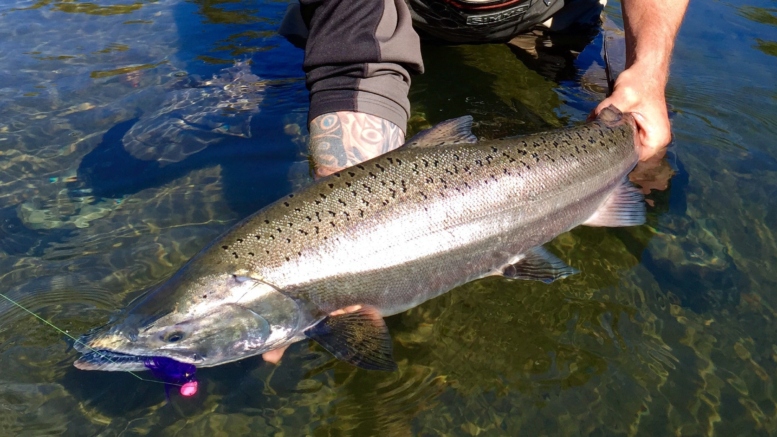Subsequent to finishing North of Falcon discussions this past April, the Grays Harbor planning model came under scrutiny as it showed two problems. First, the model predicted an imbalance of Chinook harvest in favor of the State. Second, the original fishing schedule was predicted to deliver a basin-wide Chinook escapement shortfall. As a result, the co-managers have tentatively agreed to the following changes:
- Chinook fishing Humptulips River and North Bay Area 2-2 will be mark-selective for the full recreational season (expected to put an additional 760 wild Chinook on the gravel).
- Quinault Treaty net schedule for Chinook reduced by one day (expected to put an additional 100 wild Chinook on the gravel).
- Non-treaty commercial: Due to conflicts with the Commission’s policy to provide a commercial escapement window of three consecutive days per week, the four days originally scheduled during week 46 in Areas 2A/D will be rescheduled to Monday through Thursday in week 45.
Why did these particular changes get made? From a location standpoint, when it comes to increasing Grays Harbor Chinook spawner counts, the only place to substantially make up the basin-wide escapement shortfall is in the Humptulips River.
So why does the state have to cough up so many more fish than the Tribe? The lopsided conservation burden simply reflects the Chinook catch-sharing disparity in the original plan. That disparity exists because a) sportfishing has the ability to harvest more hatchery fish thru selective fisheries, and b) the large imbalance of Grays Harbor-bound Chinook harvested in ocean fisheries off the Washington coast. While we always want management decisions to reward highly selective fishing methods — there is no denying that coastal fisheries create a large harvest imbalance.
In the new plan, WDFW has given up part of the state’s catch share in the bay and the river to offset the pre-terminal harvest disparity in the ocean. Taking away wild retention was the chosen option to reduce the state’s in-basin harvest. Are there other options? Sure… reduced bag, reduced fishing area, or reduced days in the season. But giving up wild retention preserves the maximum possible recreational opportunity without giving up bag, time, or area…. and puts an extra 760 Chinook on the gravel along the way.
While certainly a disappointment for those who fish the Humptulips, we hope this explanation makes the bitter pill a little easier to swallow. We also look at this as a healthy example of the State making concessions in the name of escapement and equity with the Co-Managers. We will eagerly watch to see if the Tribes will reciprocate this constructive attitude should imbalances occur elsewhere, and in their favor.


This rule was negotiated in the beginning of July?????? The WDFW posted an emergency rule on there website on September the first, opening day. There were no warning signs placed at the usual high traffic areas and boat launches anywhere I was ( 7 or eight places) on the Hump on Sep 2st which was opening day. +1. There was however at least 1 game warden taking fish and writing tickets!
In the past the WFDW has posted rule changes not only on a website that only some people have access to, but at all the high traffic areas and drift boat put in/takeout points. Is this a delayed notification in order to prevent an outcry about it because it’s posted too late? The WDFW is not supposed to create situations that make it difficult for otherwise law and rule abiding citizens. Instead of hiding things until the last minute and then penalizing everyone who didn’t get the message why don’t they stop the snagging and those who use the gravel bars as trash dumps. Every year I find several huge treble hooks with weight molded into them on the Hump. I watch people with beads you can hardly see and 3/0
Hooks snag fish and keep them, snaggers abound and every year it gets worse. What is it we are actually trying to do? The simple answer is easy money, as little effort as humanly possible and to create a situation where regular, normally respectful fisherman get a ticket and of course these law abiding citizens pay there fines quickly. Sure glad your total sitation number went through the roof. On paper I’ll bet you guys are doing an outstanding job. Next time can you please target the satsup, bogachiel or i don’t know, the snake river ? I’ll bet the average yearly income is a bit more on those rivers. As if that would somehow make it ok. Shame on you…….. again
I thought it necessary to clarify I did not receive a ticket of any kind on the Hump. Actually I never have received a citation on the Hump and I’ve been a regular for 10 years.